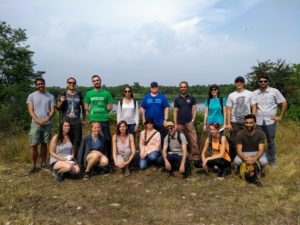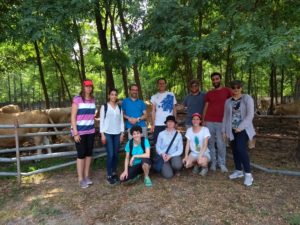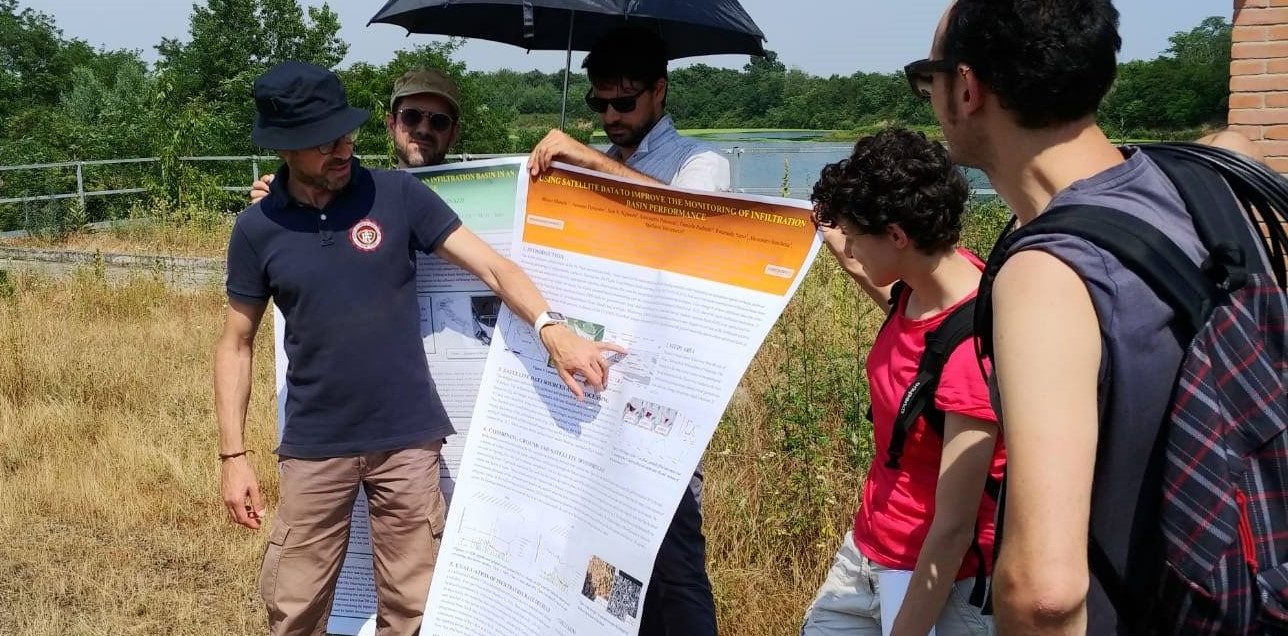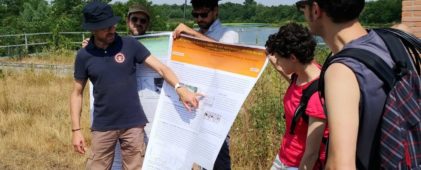The summer school on sustainable approaches in vadose zone hydrology and groundwater vulnerability was held in Milan in the second half of June 2019. The UMIL Team organized, hosted and led this summer school within the framework of the ENeRAG H2020 project. Seventeen participants attended the summer school, 13 of which attended the first week, 7 attended the second week and 3 attended both weeks. Participants were MSc students, PhD Students and Post-docs, coming from 8 different countries: Hungary (ELTE), Finland (GTK), Italy (UMIL), Tunisia, Germany, Colombia, and South Africa.
The first week of the summer school, from 17 to 21 June 2019, dealt with vadose zone hydrology. Two days were fully dedicated to the theory of groundwater flow and contamination in unsaturated media, dealing also with laboratory and field measurements to determine soil properties and monitor techniques for the vadose zone. On the third day of the school, the participants visited two case study sites in the surroundings of Milan: i) a monitoring site for the evaluation of the infiltration and redistribution of atmospheric pollutants in the unsaturated zone (including the visit to a groundwater pumping station managed by the local Drinking Water Service, CAP Holding); ii) a managed aquifer recharge site (managed by the Interregional Agency of River Po Basin, AIPO) constituted by two sedimentation basins and an infiltration basin. The site is also used for storm-water and flood control purposes. The last two days were dedicated to practical exercises on managed aquifer recharge simulations with flow and transport models.
The second week, from 24 to 28 June 2019, dealt with the assessment of aquifer vulnerability through statistical techniques. After a brief summary of the key concepts on groundwater vulnerability, two days were dedicated to the theory of linear regression, random forest and the Bayesian methods that can be used for the evaluation of groundwater vulnerability. The third day was spent in the area located to the west of Milan, observing the natural and anthropogenic characteristics of the territory. Moving from the city center towards the suburbs and reaching the plain environment, it was noticed how the environment was profoundly modified and adapted by the population during the centuries for agricultural and commercial purposes. The participants had the occasion to see the typical low land springs (i.e., fontanili) where the groundwater rises from the subsoil and the secular irrigation system of the plain. The following two days were dedicated to class lessons with training on Bayesian techniques to assess groundwater vulnerability.

Group photo, first week at Lonate Pozzolo

Group photo, second week at Agriturismo La Forestina


